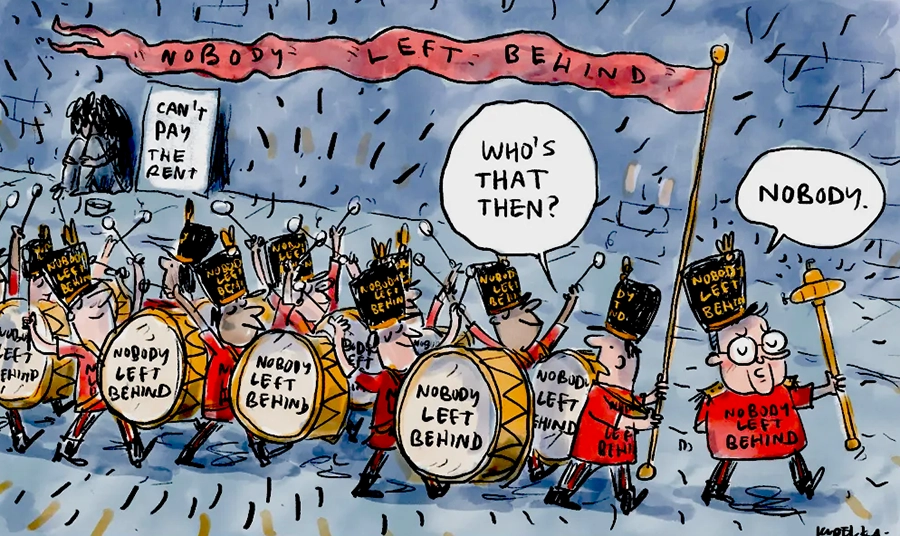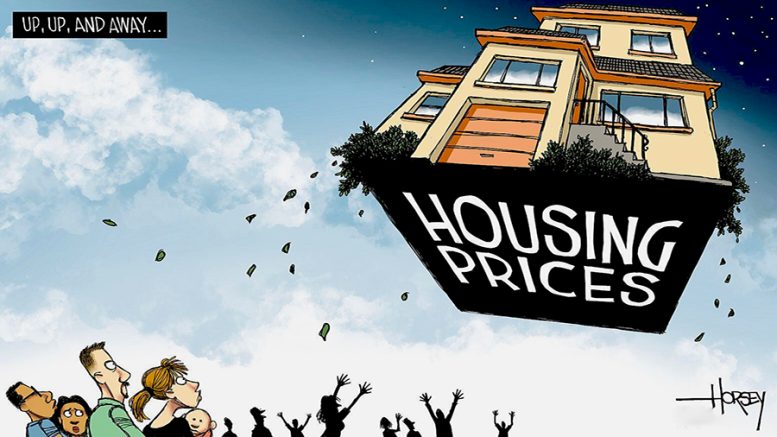Contributed from Victoria
Saying that its in the interests of most people for something rea l to be done to fix the cost of housing crisis is a no brainer. So, we must ask why so much effort is being spent by big media pitting younger against older Australians? The answer is obvious. Big media is more interested in advertising making money from the property industry, and politicians love whatever takes the attention of their failure and the opportunity to apply divide and rule.
The truth is that there isn’t a real divide between the ages. All are hit by the escalating cost of housing. It’s not a case of one group taking away from the other.
Some older Australians who have manage to pay off their mortgage are better off. But they have achieved this after wearing the burden for a good part of a lifetime. They have earned it. Further. They are not taking a home away from someone else by having done this.
Burying the myth of the age divide is important. It clouds the view of what is really going on.

Photo by Dan Jensen: The housing crisis and private market greed
The second myth is that homes have become too expensive because there are too few of them, and the only answer is to build more. Like with the one about the age divide, this is a self-serving mechanism for a greedy industry and the political elite after donations to their electoral campaigns are eager to serve these interests.
Volumes of published research on the housing affordability crisis reveals something structural has been happening over decades, and that it is this that has morphed into the present crisis. One pf them is the finding by the Australian Housing and Urban Research Institute (AHURI)., which is that, in the past, government investment in housing couple with full employment and rising wages kept the cost of housing at a reasonable level for both home buyers and renters.
The question is, why have these two supports melted away? There are two answers. There are inherent problems in the economy that has caused it to falter, producing fewer job opportunities and a decline in real wages. The other is an ideological obsession with neoliberalism that has set the priority on dominance of the market, combined with political, administrative, and financial support of the major operators in this market.
Together, these ae the drivers of today’s housing affordability crisis. Unfortunately, this is a no go area. The chorus of vested interests elevates private home ownership as the only permissible solution. This is really the key to why the problem is reduced to one of merely a shortage of supply.
This is dead wrong. We must say and keep on repeating that the problem is a lack of availability of affordable housing. Once this is understood, there can be an appreciation for what is really needed. This is alternatives to private ownership.

In Australia, it las long meant public housing in the main. This is a proven means to provide a cheaper and more secure alternative for renters. Public housing had also kept the cost of a home lower than it would otherwise have been.
But developer hunger for the valuable land on which most of the estates were built resulted on pressure on government to turn it over to profiteering. It gave birth to partnerships that are handing over land to these developers to build new properties for the private market. Making them turn over a few of them to public housing doesn’t change this. Public housing is being reduced and faces the possibility of eventual total elimination.
Public housing has also been turned into a charity for those most in need and shifted away from serving as a viable alternative for all. If this is going to be rebuilt as an alternative for all, public housing must have an immense injection of new funding from the government. To answer those who say this can’t be afforded.
For all the potential benefits of public housing, a major downside is that it is under the control of a bureaucracy that operates in the interests of the government and the industry, rather than those of its tenants. This has allowed this form of housing to be downgraded.
The answer to this is tenant control over how the estates and standalone properties operate.
Public housing and other non-private market housing are played off against each other. Is type of housing is run by organisations looking after people with specific needs and services. Public housing doesn’t suit all. This type of housing is also being downgraded, both in terms of their housing stock and government funding cuts to service providers.
The most important of these forms of housing is cooperative housing. It is distinct form other forms of not-for-profit housing in that the members of a housing cooperative manage their homes and provide other mutually beneficial services. They create communities. They serve as a living example of what can be achieved, and in doing this, contribute to housing democracy.
Increasing government funding to cooperatives would open up access to many more people. This is a good reason why cooperative housing deserves this type of funding.
We must always keep in mind that affordable housing is a right for all, and if this right is going to be honoured, it must be on a scale that Makes it a living reality.
Giving the provision of affordable the highest priority means that the money to pay for it will be found, even if it means other matters to use taxation dollars on will have to be downgraded. Governments always find enough to pay for whatever they consider important enough.


WHY DON’T YOU LIST ALL THE CONTRIBUTING FACTORS TO THIS PROBLEM TO MAKE IT CLEAR THAT IT IS ALL FOLLOWING A STRICT AGENDA OF IMPOVERISHMENT FOR THE POPULATION?